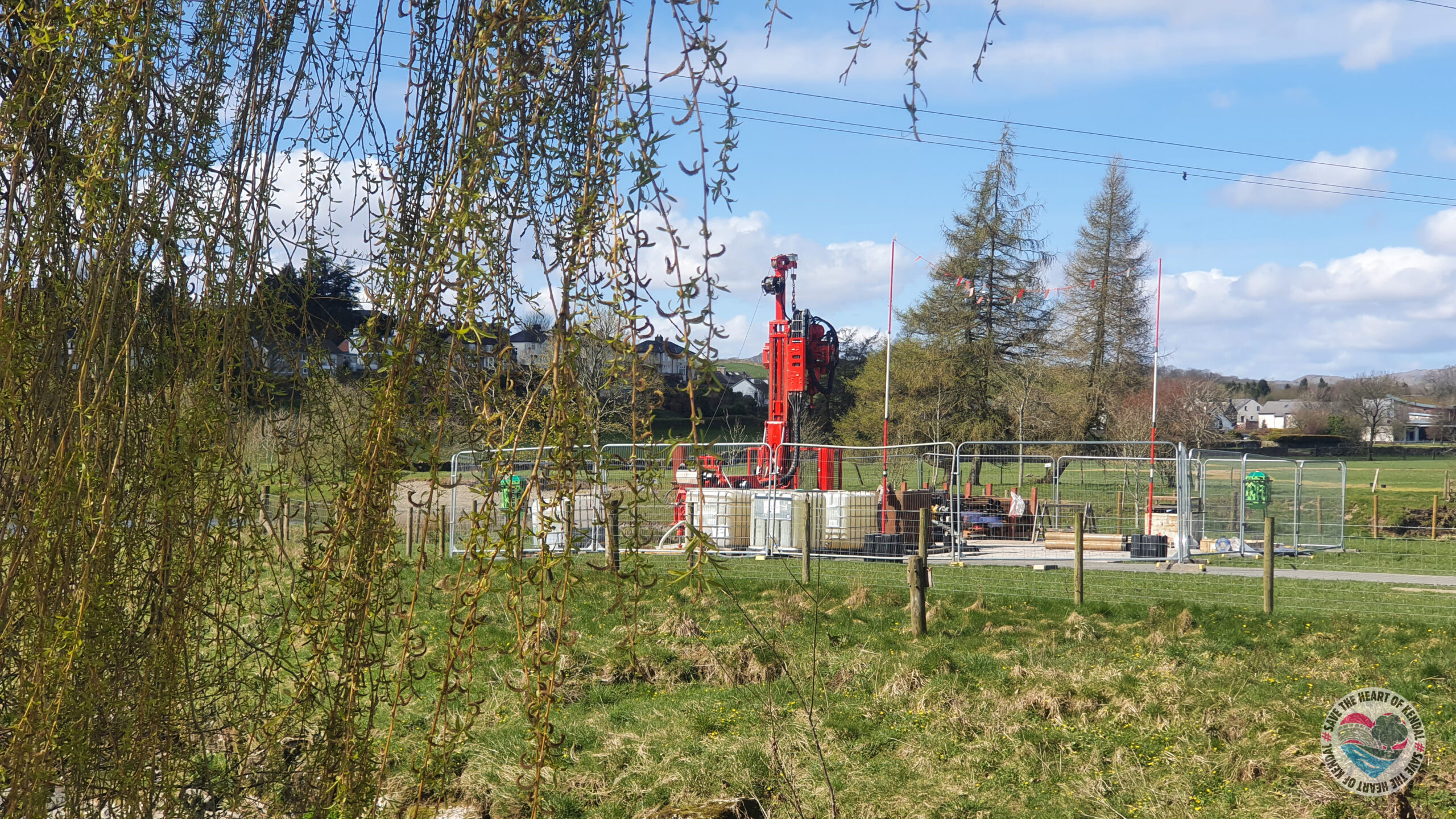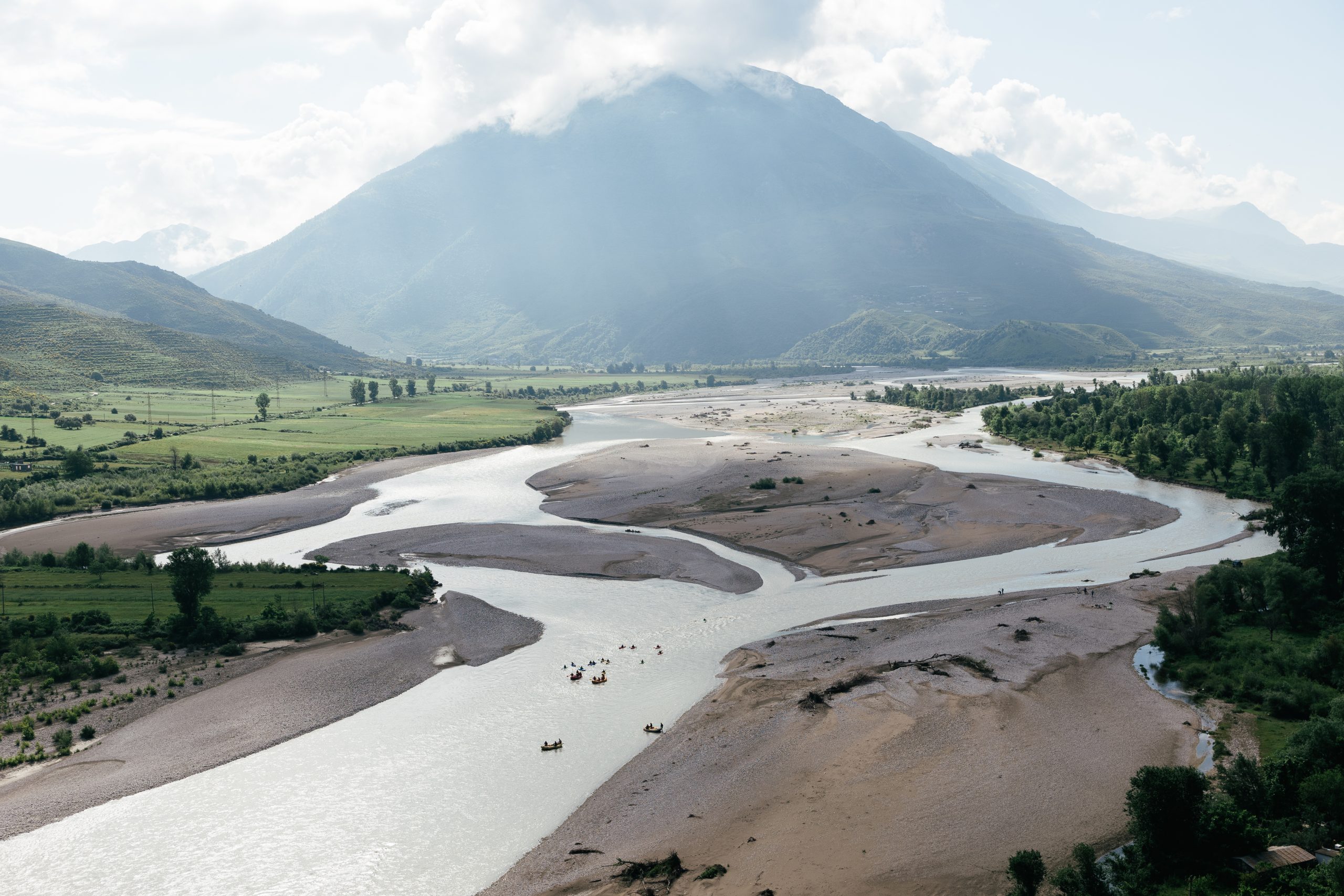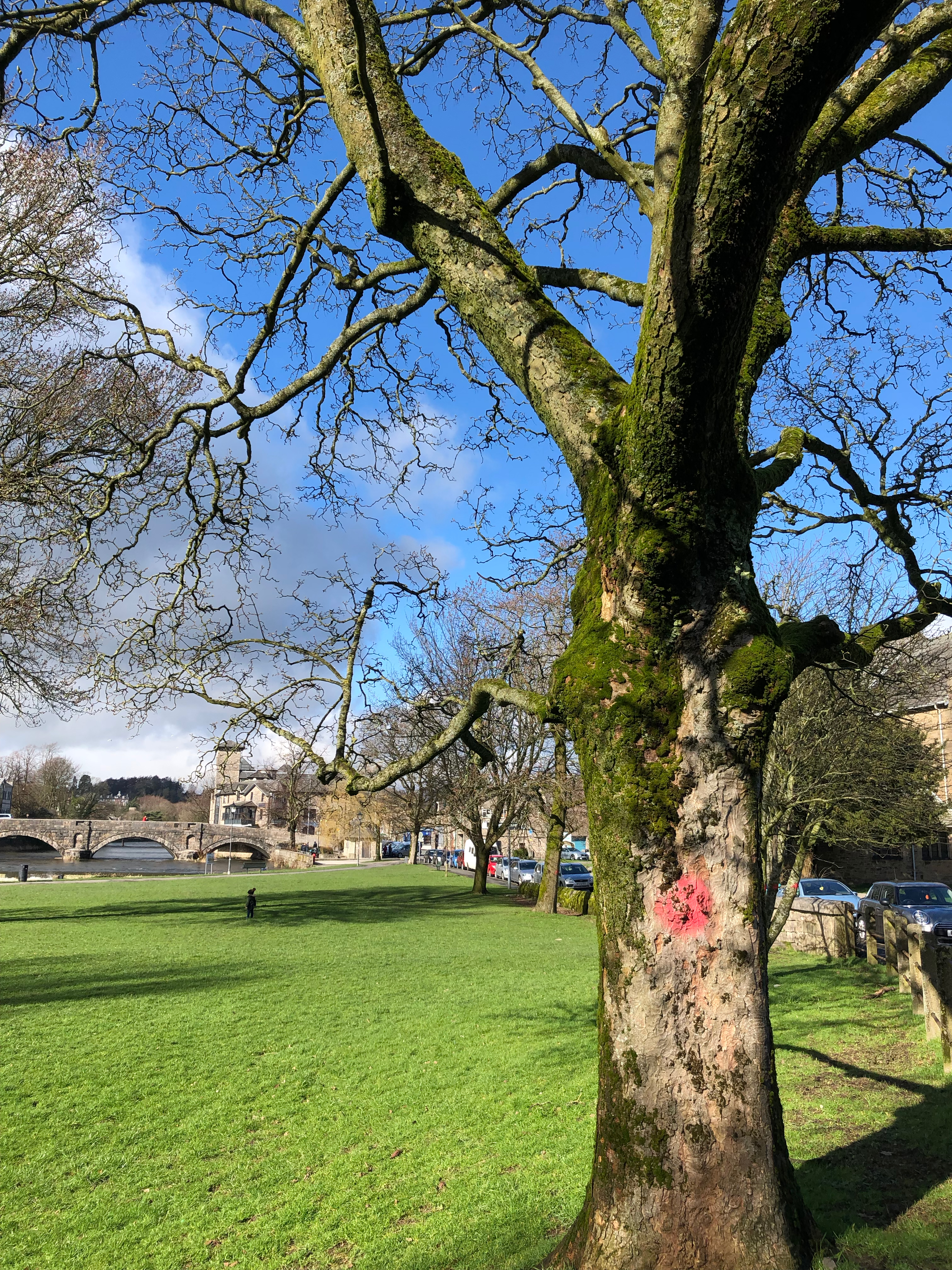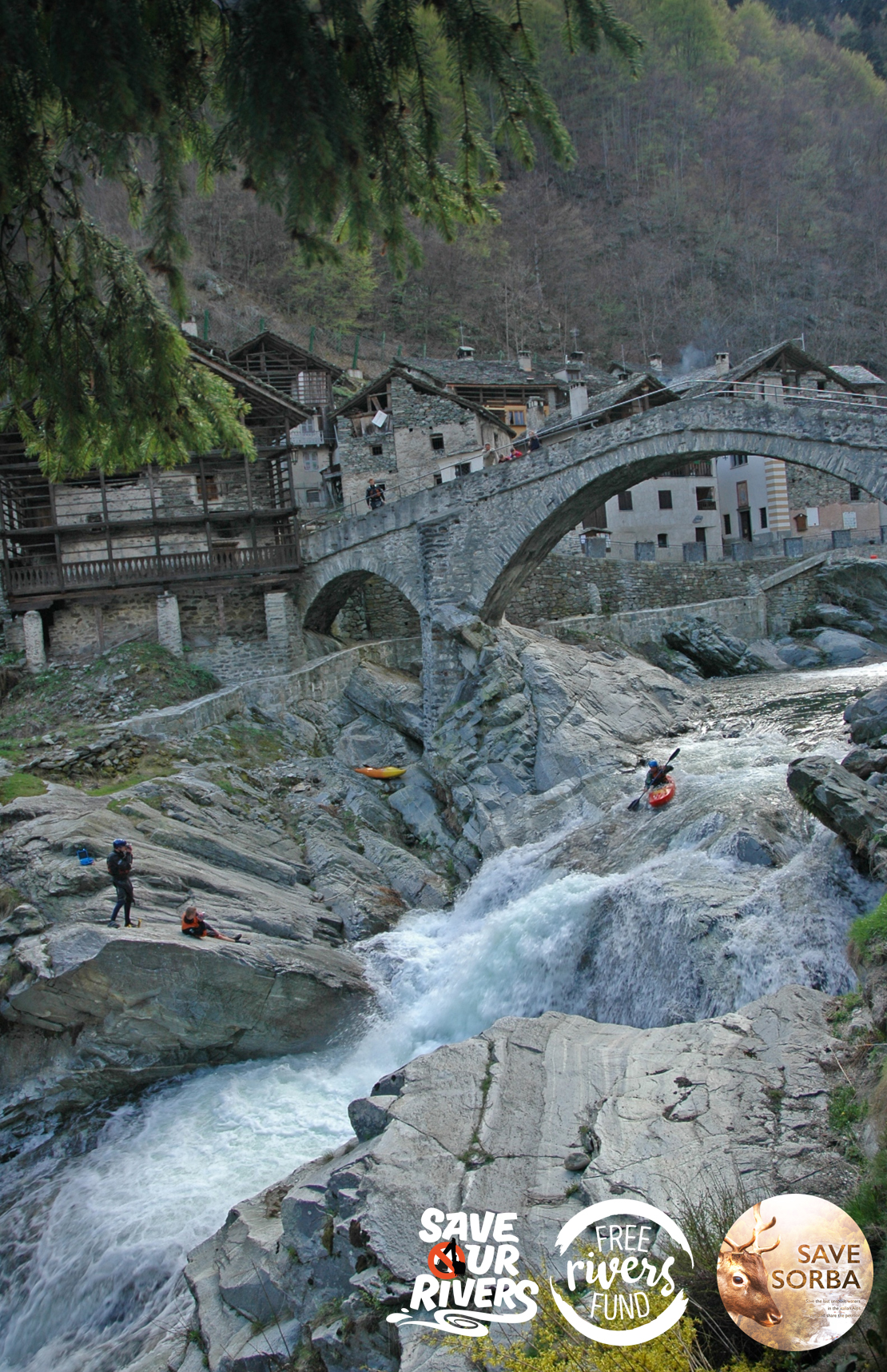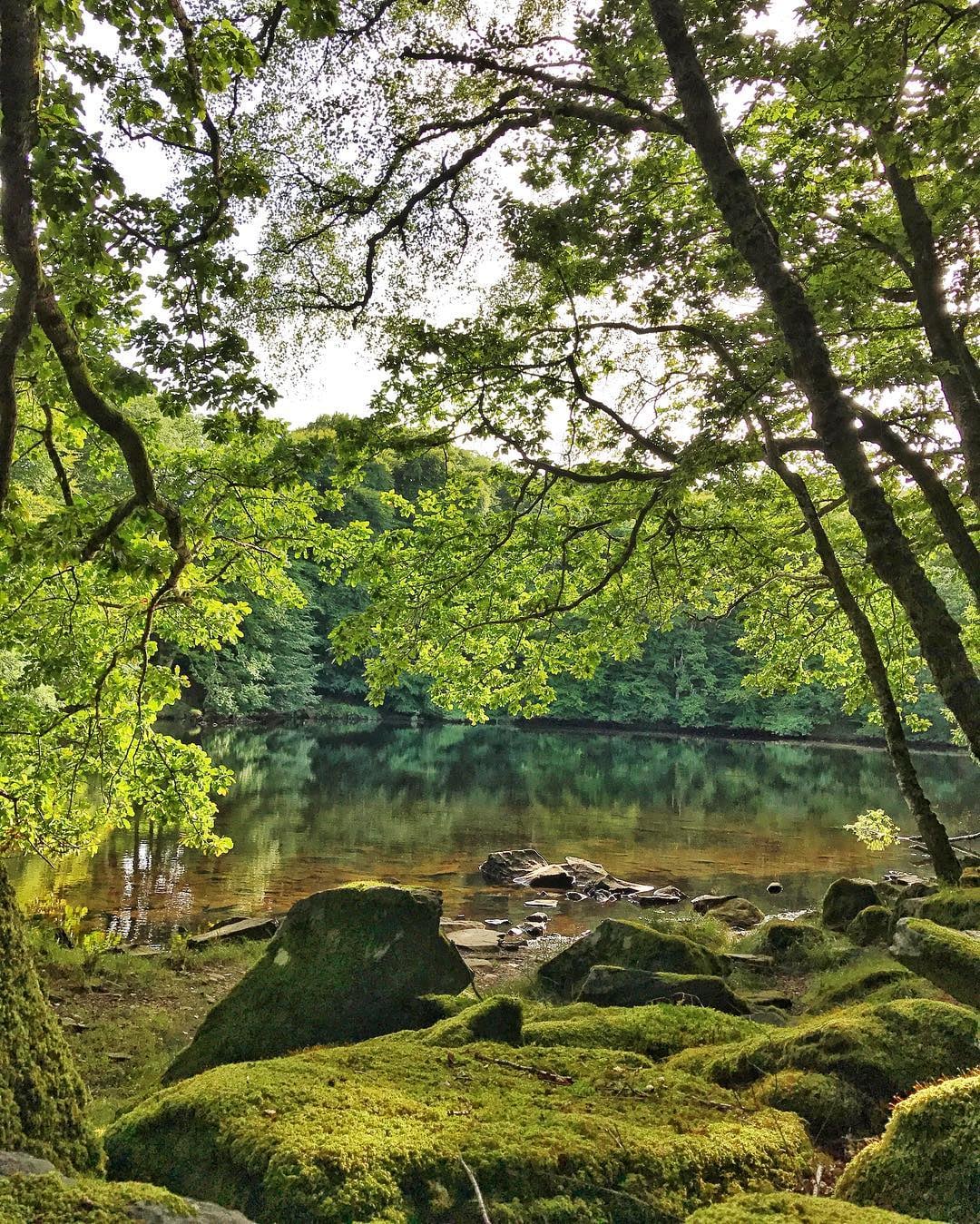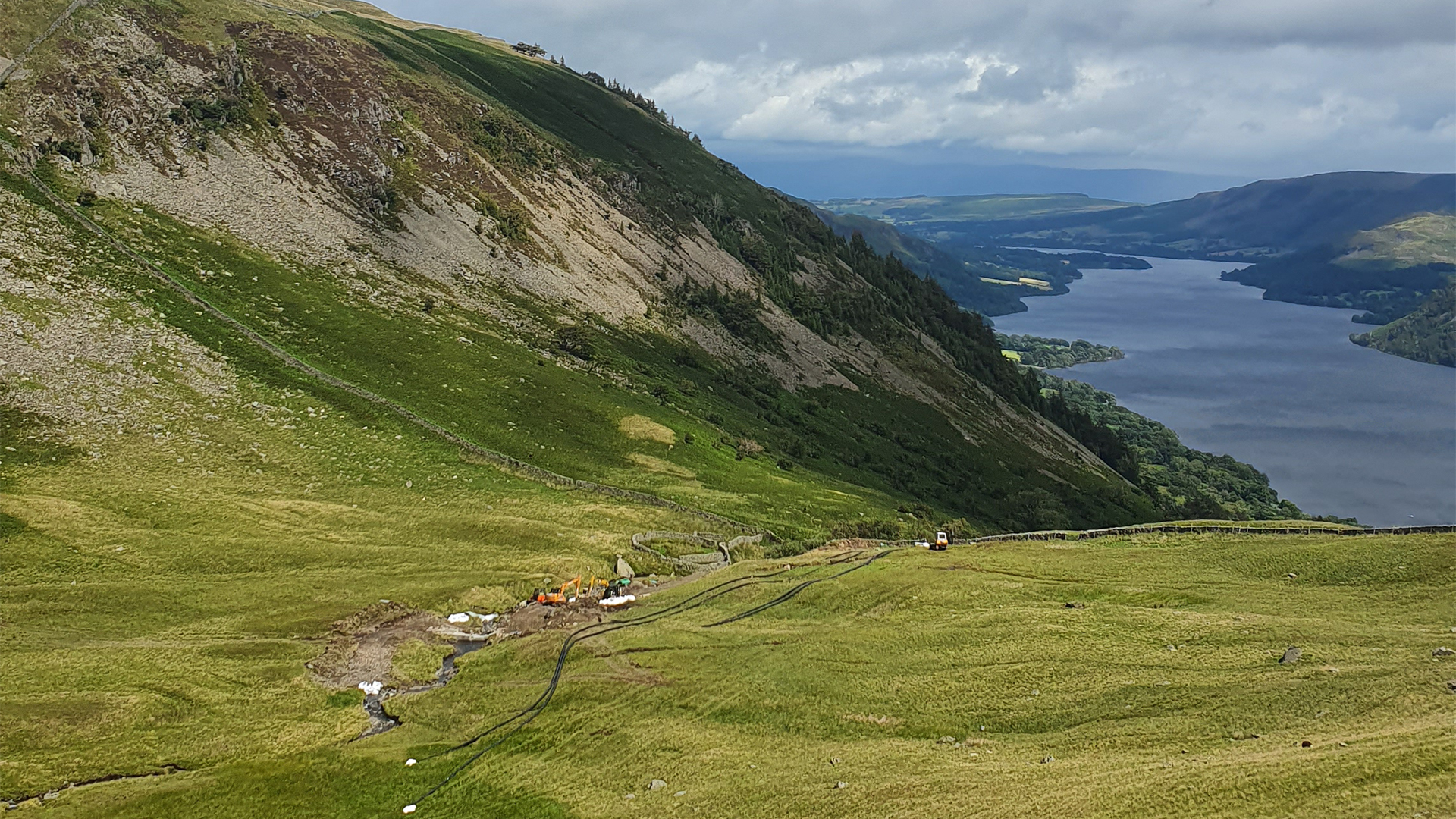The River Kent flows through the heart of the town of Kendal and has the highest level of protection afforded to a river in Britain, being both a Site of Special Scientific Interest and a Special Area of Conservation. It is also just outside of the Lake District National Park, and is often billed as the “Gateway to the Southern Lakes”. A number of features that the river Kent has been designated for are likely to be impacted by Kendal Flood Risk Management Scheme.
14th April 2021 — Comments are off for this post.
Kendal Flood Risk Management Scheme – Overview
13th March 2021 — Comments are off for this post.
Vjosa National Park Now
The Vjosa (the Aoos in Greece) river is the most geomorphologically intact large river catchment in Europe, outside Russia. Protection of its biodiversity and natural processes is vital not just for the region but for the world.
13th March 2021 — Comments are off for this post.
Kendal Vision Chair’s Concerns
Mark Cropper, Chair of Kendal Futures has raised extensive concerns regarding the flood management and the conduct of the Environment Agency.
12th March 2021 — Comments are off for this post.
Kendal Civic Society Raises Concerns
The Letter below is from the Kendal Civic Society to the Westmorland Gazette. We felt it deserved a wider audience.
Westmorland Gazette
Dear Sir
THE KENDAL FLOOD SCHEME
The Kendal Civic Society has always been strongly opposed to the current flood scheme in Kendal and we raised our objections at the time of the planning application. In this, we acted hand in hand with the Friends of the Lake District and Historic England and many other organisations. We still believe that the current scheme is fundamentally flawed - that common sense as well as the environmental science dictated that the upstream measures should be carried out first and that the impact of these be incorporated into the computer modelling which is driving the design of the walls and engineering works in Kendal. We believe that this would very likely have meant a less intrusive, more environmentally friendly solution and one which was more likely to prevent another Storm Desmond flood, something that the current scheme does not do. It might have avoided the felling of so many mature trees and the brutal engineering works in the heart of the town which will enclose the river and destroy the open aspect of the riverside. Instead, the Environment Agency with the support of SLDC has pressed forward simply in order to meet an arbitrary funding deadline.
We do, however, accept that this argument has been lost.
Now that physical work is commencing we feel that this is the time to comment further on the details of the proposals, as far as they can be ascertained. Our intention is to try to mitigate the worst aspects of the scheme and try to ensure that less damaging options are taken if possible in the Conservation Area. We have recently tried to enter into a dialogue with the Environment Agency to express our concerns directly to the design team but so far without success - we are not a formal consultee. Our response has been limited to making specific comments on aspects of the scheme as details have been published through the planning process, including most recently the preliminary details of the metal railings and coping details (about which we have serious reservations).
Our main concern is the way in which the detailed design of the interventions in the Conservation Area is apparently being decided. We are, frankly, not confident that the process is in the hands of designers with the appropriate insight, skill and authority to handle the design in this highly sensitive environment, despite best intentions. Alteration work in Conservation Areas requires particular sensitivity and understanding but it seems to us that this scheme is still led, as it has always been, by the flood engineers who have other priorities. The architectural profession and the landscape architectural profession have specialists who regularly deal with such matters. sometimes called ‘Conservation Architects’ or ‘Conservation Landscape Architects’. There are even particular qualifications and accreditation that apply and which are usually insisted on when public money is at stake in such circumstances. From the evidence to date, we are not convinced that sufficient use is currently being made of these design resources. For example, is there an experienced and properly qualified Conservation Architect or Conservation Landscape Architect leading the design work in the Conservation Area and answerable for the details? If not, why not? It may not, even now, be too late to address this.
The list of issues for such a design team leader is quite a long one - the specification of the new stonework and particularly the related details such as the copings; the final details of the new railings and how the important existing Webster railings and Rishton railings are incorporated; the details of how the existing stone will be re-used; the improvement of the ugly glazed screens; the details of the ground surfaces; the details of how the existing features such as the laundry steps and the fountain will be incorporated; the details of the new bridge landing areas; the design and selection of the street furniture; the design of the artificial lighting and the commissioning and installation of the promised works of art.
It is probably too late to stop this dreadful scheme in its tracks - our preferred course of action - but if anything can be done even at this late stage to improve the quality of the details it seems to us that it will require a change in approach on the part of the Environment Agency.
YS
17th November 2020 — Comments are off for this post.
Save Val Sorba
Valsesia, Piedmont; a paradise in the Northern Italian Alps. In winter, the snow-capped mountains draw skiers and mountaineers. In spring, as the snow melts, the valley’s rivers become a mecca for white water kayakers and fly fisherman. Drawn from around the world to their crystal-clear waters and bedrock rapids.
Click HERE to Act Now and Save Val Sorba , sign the petition by 5th Dec


This village is the planned site for a 226KW small scale hydropower plant (HEP). Sited at the confluence of the Sorba and Gronda rivers it will initially involve a dam on the upper Sorba and over 1 kilometre of pipeline dewatering the river (except for a tiny compensation flow). The snow-fed nature of the Sorba means this HEP will only reliably generate power in the spring but the impact of the dam on sediment/gravel transfer and therefore on invertebrate populations and spawning habitats for the resident Bullhead and Rainbow Trout will be year-round. The visual and noise impact of the powerhouse and pipeline will affect the tourism industry of the valley permanently and the consequences of breaking the connectivity of a currently free-flowing river cannot be mitigated for. Local activists also have concerns that once the powerhouse is completed the Gronda may also face the prospect of damming and dewatering to supply the same generator.
Europe is saturated with Hydropower Plants. Hydropower Pressure on European Rivers lists over 20,000 registered hydropower plants in existence with nearly 10,000 more planned or in construction. The AMBER project estimates over 1,000,000 barriers to river connectivity of all types, many of which will be smaller HEPs not captured in the previous study. Central and Western Europe, and specifically the Alps, bear the main burden of this development and the effect on river health and biodiversity has been stark. Since 1970 freshwater population sizes have fallen by an average of 84% with dams and barriers to river flow being a leading cause. This makes the still free-flowing rivers of Valsesia far too precious to trade for the tiny amounts of energy they can provide. The 226KW maximum generation of the Rassa HEP is the equivalent of running just over 20 electric showers, and only for the short period of the year in which the Sorba carries enough water.

The high environmental cost of small HEP outweighs its value in terms of energy production. A study by the European Commission when discussing HEPs of less than 10MW (some 40 times bigger than the Rassa HEP) reported that:
“This raises the question of the role of small hydro power plants and the pertinence of further developing such infrastructures. Their contribution to the global energy production and security of supply, or to the renewable energy sources targets, is extremely limited. In parallel, their impacts on the environment are severe, as they create multiple interruptions in water flows and fish passages, increase habitat deterioration and require individual road access and grid connections.”
To follow the local campaign against the Rassa HEP follow them on social media HERE
On their website HERE
Click HERE to Act Now and Save Val Sorba , sign the petition by 5th Dec

5th November 2020 — Comments are off for this post.
Afon Artro


Only 35% of the rivers in the Western Wales River Basin meet good ecological status according to the European Water Framework Directive. The Afon Artro near Llanbedr is one of these.
This river is currently threatened by a proposal to develop a commercial fallen stock (dead agricultural animals) collection and storage facility situated right on its banks.


Save Our Rivers feels the application fails to make clear the size of the proposed operation and makes no adequate explanation of how effluent and wastewater from the cleaning of collection containers, vehicles and buildings will be prevented from entering the watercourse.
Our full objection letter can be seen HERE
The community in the surrounding area have come together as Cyfeillion Cwm Nantcol Friends to oppose this application that threatens their river and local surroundings.
You can follow their campaign on social media HERE
The full application can be seen online HERE
If you wish to object to this application you have until the 9th Nov and can do so by commenting online on the SNPA website.
CLICK HERE TO OBJECT ONLINE
16th October 2020 — Comments are off for this post.
A Chance to Reduce Single-use Plastics in Wales
Respond to the Welsh Government Consultation on banning 9 common single-use plastic items.
This is Wales’ chance to be at the forefront to be a global player to tackle plastic pollution.
The Welsh Government’s ambition and the desire of the communities in Wales are for Wales to be free from unnecessary, single-use plastics to tackle the problem of plastic pollution, reduce litter and help move Wales towards a circular economy where items will be reused and repurposed.
We welcome the consultation and we are urging the welsh public to get involved and share their thoughts to ensure that the policies put in place throughout Wales are ambitious and progressive.
The Welsh Government are asking your views on whether to ban the following:
Plastic stemmed cotton buds
Plastic spoons, knives and forks
Drink stirrers
Straws
Single use cups made of polystyrene
Takeaway food containers made of polystyrene
Plastic plates
Balloon sticks
Oxo-degradable plastic


“We all have a voice and we can all make a difference to reduce our impact on the environment. Sadly retailers/manufacturers have placed unnecessary barriers for consumers and we now need to break our habit and reliance on single use plastics and move away from being a single use disposable society. We need to be mindful that the purchases we make are considered choices.
Now is the time for us to make a difference by sharing our views to help formulate policies for Wales to tackle plastic
pollution.”
Sian Sykes, Regional rep for Surfers Against Sewage and Lead for Plastic Free Communities, Anglesey.
DEADLINE 22 nd October 2020
FURTHER INFORMATION CLICK HERE
HOW TO RESPOND
The consultation is really quick to respond to and your views will help let the Welsh Government form their policies to tackle plastic pollution.
You can respond online here.
If the online form is causing you problems, you can download a form and submit it via email.
Please download the form HERE
Send to EQR@gov.wales
Other info
Facts and figures for plastic pollution

25th August 2020 — Comments are off for this post.
Threat to river protection laws following BREXIT
In a recent speech to business leaders the head of the Environment Agency (England’s main environmental regulator), James Bevan, has proposed using the opportunity presented by BREXIT to weaken the laws that supposedly protect England’s rivers. The Water Framework Directive (WFD). Read more
30th June 2020 — Comments are off for this post.
How should we tackle flooding in Kendal?
Damaging floods are happening more and more often in our country – and we still aren’t tackling the problem properly.
Why is it such a serious problem? First, we’re still building new houses on floodplains. Since 2013, 84,000 new homes have been built that are categorised as ‘at risk’. That’s 1 in 10 of all homes built. And we’re going to build 11,400 more in the next 4 years on high risk land. These are areas which used to catch water and store it during heavy rain. Now, despite so-called ‘planning controls’, this water hits houses and roads to run off much faster down culverts and drains and into rivers. Instead of flood plains which slow down the flood peak by storing water, developed areas push it downstream faster, moving the problems further down the catchment.
Second, climate change means more extreme weather. The UK expects a 10% increase in average rainfall by 2100 from 1985-2005, and in higher intensity rainfall events. We can expect more frequent flood peaks – and our communities aren’t ready.
Why do flood protection schemes fail?
Flood barriers – like the ones proposed in Kendal – can handle moderate flood peaks. But when they’re overtopped the water will run over into properties on the ‘protected’ side. It’s already happened in Cumbria during 2015’s storm Desmond in Carlisle, Keswick and Cockermouth. This winter it happened to communities on the river Severn.
With flooding happening more often, flood barriers will fail more often. In a storm Desmond scale event this will happen to the proposed barriers.
Slow the flow
The Environment Agency is still relying heavily on Kendal-style engineered flood defences, but there are better ways of doing it.
Slow the flow means using natural flood management. You hold the water on land upstream of flood-prone communities with planting and ponds, as well as the creation of temporary surface water retention systems. It has already worked in Yorkshire, and the Environment Agency know this. They’ve even written a guide for farmers on how to do it. But in 2017, only £15 million went to natural flood management, while the Kendal scheme is expected to cost £72m across three phases. We should spend that money on natural flood management, and add to temporary upstream water storage solutions. This requires taking the Pickering ideas and evolving them further to protect our communities.
This choice matters to all of us, throughout the country. Will we build ever higher walls? Keep pouring concrete into our rivers to try and control nature? Or work with nature, our communities and the resources we already have? Using approaches that are working from Pickering to New Zealand?
Now is the time for Kendal to choose. It can reject an outdated scheme that will fail under nature’s ever-higher floods. It can choose to slow the flow and tackle the problem further up the river using natural flood management techniques.
And we believe the choice is obvious – Kendal should set a path for the country to follow.
Sign our petition and join our calls for a rethink of the scheme.
Sign the Petition
30th June 2020 — Comments are off for this post.
Download and display our latest poster
We have made a poster available for you to download and display.
Click the links below to download and print out our latest poster to display across Kendal and beyond.
While you're here - have you signed the petition? www.change.org/savetheheart
Save-the-heart-A4 - A4 Poster Download
Save-the-heart-A3 - A3 Poster Download

